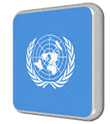

EPACHA.org

Environmental Protection Alliance and Center for Humanitarian Affairs Foundation
"REBUILDING OUR WORLD BLOCK-BY-BLOCK"
T h e P o r t a l s o f E P A C H A F o u n d a t i o n – P h a s e I I a r e O p e n :

It's Time to Learn More About Your . . .
"Human Rights!"

The Universal Declaration of Human Rights. Photo Geneva Centre for Human Rights Advancement and Global Dialogue.
The United Nations &
Human Rights

Courtesy, United Nations
The History of the Universal
Declaration of Human Rights
Video Courtesy, UN Human Rights
On 10 December 2025, the
Universal Declaration of Human Rights
Celebrates its 77th Anniversary!
Learn more at: https://www.ohchr.org/en/what-are-human-rights
United Nations High Commissioner for
Human Rights, Volker Türk
Courtesy, United Nations
On 8 September 2022, following the vote of the General Assembly, Volker Türk was selected to succeed Michelle Bachelet of Chile as United Nations High Commissioner for Human Rights.
Learn more at: https://www.ohchr.org/en/ohchr_homepage
-
-
The Beginning of the . . .

Courtesy, United Nations
Article 1.
All human beings are born free and equal in dignity and rights. They are endowed with reason and conscience and should act towards one another in a spirit of brotherhood.
Article 2.
Everyone is entitled to all the rights and freedoms set forth in this Declaration, without distinction of any kind, such as race, colour, sex, language, religion, political or other opinion, national or social origin, property, birth or other status. Furthermore, no distinction shall be made on the basis of the political, jurisdictional or international status of the country or territory to which a person belongs,whether-it-be independent,-trust,-non-self-governing or under any other limitation of sovereignty.
Courtesy, United Nations
Read Full Text of the
Universal Declaration of Human Rights
[Translated into 375 Languages] at:
-



What is the Work of
OHCHR?

OHCHR 2025 Appeal
Courtesy, United Nations - OHCHR
Learn on the following web pages:
-
**Special Announcement**
Do You Know About the . . .
UN Human Rights Council?
"The Human Rights Council holds no fewer than three regular sessions
a year, for a total of at least ten weeks. They take place in March (four weeks), June (three weeks) and September (three weeks).
If one third of the Member States requests so,
the Human Rights Council can decide
at any time to hold a special session to
address human rights violations and emergencies."
Keep Up-to-date with the . . .

58TH REGULAR SESSION
24 FEB - 4 APR 2025

Above Quote/Image Courtesy, United Nations
There's much to learn about
"Human Rights"
Start learning more at:
**Special Announcement**



U.S. Executive Order signed to
withdraw United States from
UN Human Rights Council
February 4, 2025
Learn more on the following web page:



Time to Learn About the
Universal Periodic Review Process
The following text is a Courtesy of the

U.S. DEPARTMENT of STATE
Review
The Universal Periodic Review process reviews the human rights record within a country based on three documents: 1) a report submitted by the national government of the country under review; 2) a report compiled by the Office of the UN High Commissioner for Human Rights (OHCHR) consisting of information contained in the reports of treaty bodies and special procedures concerning the country, including its observations and comments, and other relevant official UN documents; and 3) an OHCHR compilation of information that is credible and reliable from other stakeholders, including NGOs and national human rights institutions.
Each country undergoing review takes part in a 3.5-hour Q&A session, in which any UN member state is able to ask questions and make recommendations. One hour and ten minutes of the session is provided to the national government to present its report; respond to any written questions from other UN member states that it may have received prior to the review; respond to oral questions, comments, and recommendations during the review; and present its conclusions.
Following this session, a “troika” of rapporteurs—a group of three Human Rights Council members selected by lot, aided by a member of the Secretariat (OHCHR)—produce the report of the review. The report must accurately reflect the debate and must include all recommendations made to the national government by other member states. The national government is then given the primary responsibility to implement the recommendations or to decline recommendations it does not wish to undertake. Two days following the review, the Working Group presents the report for adoption. For two weeks after the adoption, factual errors can be corrected through the request of delegations. Finally, as part of the process, countries follow up on recommendations to improve their internal human rights situation.
Report
The final Outcome Report of the UPR of a national government is debated and adopted in the following plenary session of the HRC. During the plenary session, each government’s outcome report is debated for an hour. The national government is provided 20 minutes to clarify in a statement any issues insufficiently addressed during the review, explain its decisions regarding recommendations, note its voluntary commitments, share its views on the Outcome Report, and make final comments. Members and observers of the HRC have another 20 minutes to comment on the UPR Outcome Report. Then, civil society organizations and National Human Rights Institutions with ECOSOC accreditation have two-minutes for interventions to express their views until the hour concludes.
The final Outcome Report of the UPR is adopted at the plenary session of the HRC. It is composed of a procedural decision adopting the Outcome Report, the report of the Working Group, with the written comments provided by the national government, and the summary of the plenary proceedings contained in the report of the session.
Implementation
The state under review is primarily responsible for implementing the recommendations per the final report. In principle, each state should use its review to report on its progress toward implementing recommendations accepted during the previous review. In collaboration with the national government, the international community also assists in implementing recommendations and conclusions related to capacity-building and technical assistance.
Learn more on the following web page:

-
**Special Announcement**



The U.S. to Re-engage With the
Human Rights Council
February 8, 2021
'The United Nations Secretary-General has welcomed a
commitment from the new U.S. Administration
to “reengage immediately and robustly” with
the Human Rights Council, following
the withdrawal of the U.S. from
the multilateral
body nearly three years ago'.
Text Source Courtesy, United Nations - UN Photo/Jean-Marc Ferre
Welcome Back!
Reminder: Human beings exist everywhere;
including the United States of America!
Learn more on the following web page:



-
R e m i n d e r . . .
"Children"
Around the World Have . . .
"Human Rights!"
M U S T S E E V I D E O
It's time to start learning more . . .
. . . on the following web page:
-
-
REMEMBER:


Courtesy, UNICEF - http://www.un.org/en/sections/issues-depth/children/



-
Make sure to also visit the following web page:








-
-
EPACHA Foundation Extends
Sincere Thanks to
UNITED NATIONS

AND
for allowing use of images, visuals and
print presented herein.
-
-
If you’ve missed the work of EPACHA in its Phase I duration, please be encouraged to click on the below web links.
Sincerest Thanks are Extended to http://archive.org/web/ for having made possible an archived viewing of
EPACHA Foundation’s entire volume of its Phase I web pages:

https://web.archive.org/web/20180321225044/http://www.epacha.org/Pages/Home_Page_BkUp3.aspx
Complete List of EPACHA - Phase I web pages:
M A Y 2 0 1 8 - U P D A T E D - F E B R U A R Y 2 0 2 5








